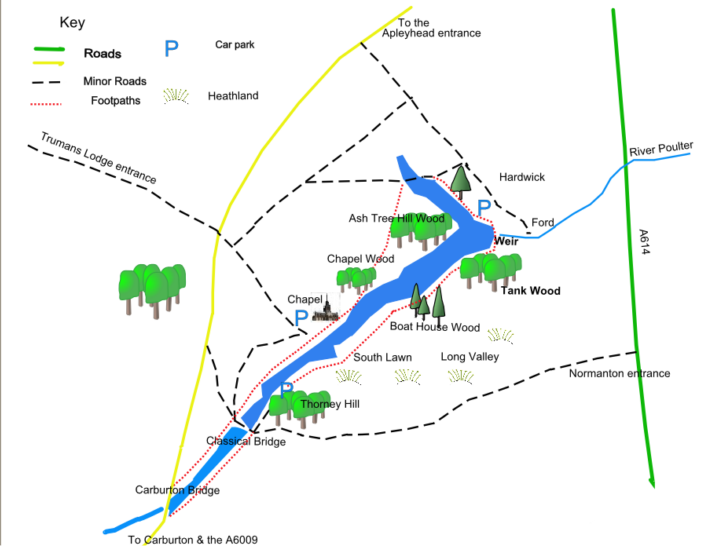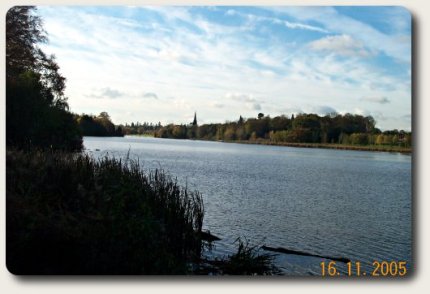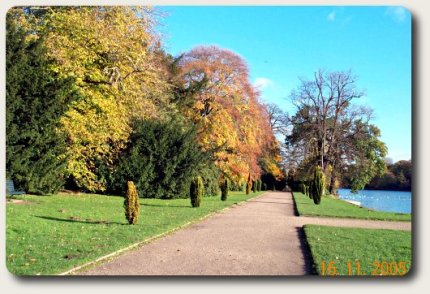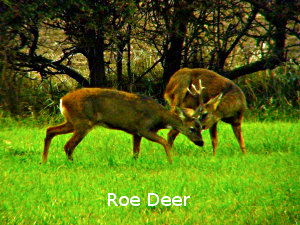
Owned by the National Trust, classed as a SSSI (Site of Special Scientific Interest). About 530 hectares (1300 acres) in size. Toilet, cafe cycle hire and shops at the visitor centre. For more details about the history have a look at this Wikipedia page.
Has around 2 million visitors a year, mainly on the summer weekends and holidays. A lot of the park is of unrestricted access, except for areas around the private houses and the agricultural land. Please note that most of the entrances are closed at night, including the Carburton entrance. The Apleyhead entrance is always open (except when closure takes place for special events). The park may be closed odd days in the summer for concerts.
There is a car parking charge of £6.00 for non National Trust members. The main car parks are marked on the map below.
Bus services include the Sherwood Arrow which goes to the Carburton cross roads and also travels to Sherwood Pines, Sherwood Forest visitor centre and Rufford Park — this is mainly a summer service only though.
Disabled visitors can hire a wheelchair — for more details call 01909 544917.

Heathland — really, I suppose, better called acid grassland, as much of it is dominated by wavy hair grass, there is also some southern-type heathland with ling and heather. Has scattered Oak, Birch, Sweet Chestnut, Scots Pine, Gorse and Hawthorn. The National Trust has carried out a lot of work to restore some heathland to the park since the 1980s. This includes grazing of areas by sheep and replanting bare areas with heather. Much of the Sherwood Forest area of heathland was lost between the 1920s and the 1980s. It was ploughed up for cultivation, turned into monoculture forests, used for coal mining or just neglected allowing invasion by bracken and scrub.
Farmland — mainly arable, but some sheep pasture.
Woodland — has large areas of Oak (both Pedunculate and Sessile), Silver Birch, Beech and Sweet Chestnut with a ground layer of brambles and bracken, plus plantations of Spruce and Pine and not forgetting the long avenue of Lime Trees.
Lakes and the River Poulter — open water with Alder, Sallow, Ash and sedge marsh..

Made by damming the Poulter, it is about 90 acres in area, being fairly shallow, but usually with steep banks. It gained several acres in size when heathland to the north-east end sank, because of mining subsidence.
The lake is used for coarse fishing, but no water sports take place on it, meaning that most wildfowl is undisturbed. It was one of the first breeding sites of Gadwall in the county. Goosander winter in some numbers here (maybe as high as 50 birds).

Along with the area between the Carburton and Clumber bridges, the best part of the park for woodland birds. The area to the left of the photograph and back to the buildings is the traditional one for Hawfinches, but also the most popular area for visitors, so an early morning visit is advised. Marsh Tit, Nuthatch, Tree Creeper and Coal Tit are easily seen.
As the birds here are used to people walking by, scattering some seed on a tree stump and retiring a few metres will give some excellent photographic opportunities. The lake on the right of the photograph has a wide variety of waterfowl especially in winter.
The reedbed here was formed by mining subsidence a few years ago. This used to be the site of a huge Swallow roost in past autumns, but now numbers, though still substantial are a lot less. Hobbys can be seen here hunting the hirundines in August and early September.
The fields and hedges around here are also worth a look, especially in winter, for finches and buntings.
That's the Carburton and Clumber Bridges
This area is also suffering from mining subsidence, with the northern side of the Top Lake sinking quite noticeably.
This area is mainly wooded with a wide variety of trees and shrubs, from Yew to Oak to Beech to Scots Pine and has a good selection of birds, including Willow Tit, Woodpeckers and in the summer Blackcaps. Mandarins can be seen in this area from time to time.
Mainly open heathland. Only Great grey Shrike and perhaps Stonechat the interesting birds in winter. Tree Pipits, Redstarts, Willow Warblers, Common Whitethroats and Yellow Hammers breed in the summer.
Hobby — around the Ford especially in August evenings when they come to play with the Swallows.
Lesser spotted Woodpecker — regular in the 1990s, now only a handfull of sightings a year.
Wood Lark — uncommon in the Dukeries mid nineteeth century, but a commonish breeder in the mid-twentieth century, declining again in the next couple of decades. Now on the up again, and in spring and summer regular on the South Lawns. If they are not singing then look on the fence posts and listen for the distinctive call.
Nightingale — The standard test for suitable habitat is to send a field worker dressed in white overalls, into bushes, if he cannot be seen then the habitat is suitable for Nightingales (allegedly). Used to be common and a regular breeder up to the end of the 1970s. Its decline predates the large scale clearing of rhododendrons by the National Trust, which has been blamed for the decline.
Marsh Tit — listen for the buzzing "chip-chip-chip-chip" in the spring and summer. Prefers larger and more mature trees than the Willow Tit.
Great grey Shrike — visits some winters to the heathland. An elusive one on the South Lawns in 2004-5 and again in 2007/8.
Corvids — up to 15 years ago the only corvids present in the park were Jays and Jackdaws, but in 2006 Magpies and Carrion Crows are the most noticeable corvids. Carrion Crows have also been accused of damaging the heathland by digging up areas to look for beetle grubs, causing bare patches.
Hawfinch — used to be fairly easy to see in the winter up to the 1990s around the Chapel Wood, between the two bridges and around the cycle hire building, now hard to find even in February and March. Yew trees are attractive to this species in the earlier part of the year. The largest flock the author has seen was of about 20 birds in the 1980s, but in the South Lawns area. The increase in Grey Squirrels in the park over the past 15 years is one possible reason for the decline in Hawfinches.
 Mammals include hordes of Grey Squirrels and considerably less numbers of Roe Deer which are best searched for at dusk. Noctule and Natterer’s bats also occur.
Mammals include hordes of Grey Squirrels and considerably less numbers of Roe Deer which are best searched for at dusk. Noctule and Natterer’s bats also occur.
Any criticisms, corrections or comments to the author Derek Huskisson

This work is licensed under a Creative Commons Attribution-Noncommercial-Share Alike 2.0 UK: England & Wales License.